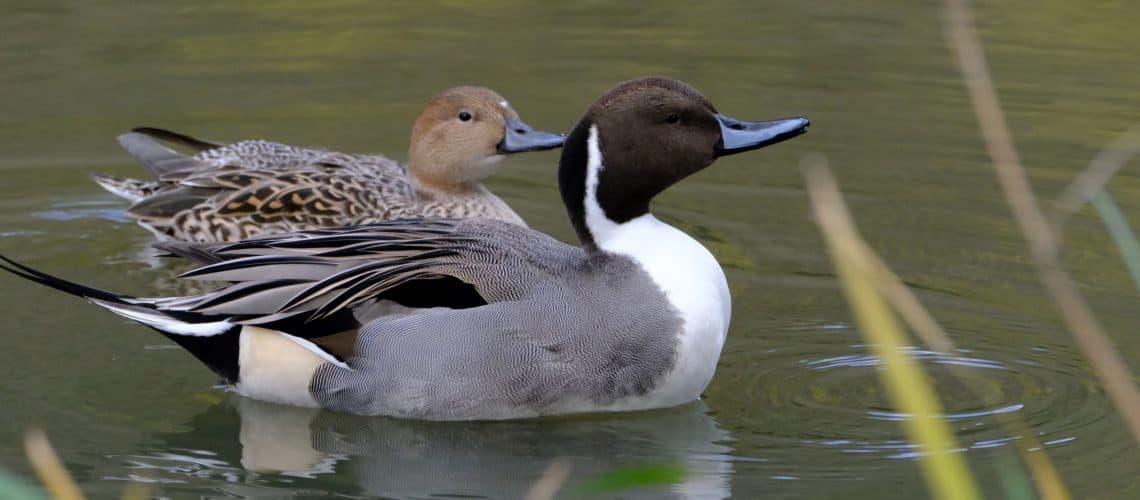
Pintail ducks can usually be identified by shape alone – thin bills that curve up to a round head, long neck, slender body, and a long tail. Males have a chocolate brown head with a bluish bill and the white of the breast extends up the sides of the neck. The underparts are white, the back and sides are mostly gray and their tail feathers form a long spike which gives the species its name. In the warmer seasons, adult males tend to look a lot like their female counterparts. Females are a warm brown with darker mottling, lighter head and neck, and white belly. While the females’ tail is shorter than the male pintail, it’s still significantly longer than those of other species. The bill is dark gray and the speculum is brown and inconspicuous. While in flight, they are swift, sleek, elegant and aerodynamic – due to their appearance in the sky, pintail ducks are referred to as the greyhound of the air.
Pintails are omnivorous, feeding on algae, seeds, grasses, insects and small fish. While very common, their population has declined by over two percent over the course of almost 50 years; this adds up to a decrease of 70% in North America. There are four species of pintail ducks; the White-Cheeked, Yellow-Billed, Eaton’s and Northern Pintail. A medium-sized dabbling duck with a slim profile, male northern pintail ducks are easily recognized due to their long tails, which have central feathers that may be as long as four inches. The long neck of the pintail allows it to dabble for food that may be up to one foot under water, which is beyond the range of several other dabbling ducks, like mallards. This ability allows them to feed on the seeds and nutlets of moist-soil and aquatic plants.

